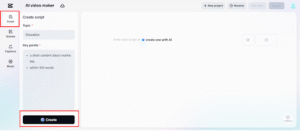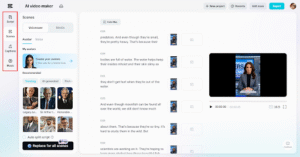TECHNOLOGY
How YouTube Subscription Behavior Has Shifted Post 2023 to 2025

Back in the day, hitting the subscribe button was everything. It was how viewers showed loyalty, how channels grew, and how fans stayed in the loop. But something changed. After 2023, the way people use YouTube, especially when it comes to subscribing, took a new turn.
Today, people still watch content more than ever. But subscribing? That’s no longer the only sign of interest.
Viewers Rely More on Recommendations, Not Subscriptions
Subscriptions used to be the main way to keep up with creators. Now, YouTube’s algorithm has taken over. It shows you what it thinks you’ll like, even from channels you’ve never heard of. That’s why people are clicking on more videos from random creators and not always subscribing.
Even if someone watches the same channel regularly, they may not hit subscribe. Why? Because YouTube keeps recommending similar content anyway. Viewers know they’ll see it again whether they subscribe or not.
Shorts Changed the Game
Short-form videos have exploded. Since YouTube Shorts became a major part of the platform, people scroll through content without really thinking about subscribing. Shorts are fast, catchy, and addictive. But they don’t always build long-term followings.
Viewers often engage with a clip, swipe, and move on. Subscribing feels unnecessary when new, fun content keeps showing up without effort. For creators, this means getting millions of views doesn’t always translate to loyal subscribers.
Premium Users Are Watching Differently
More people have started using ad-free versions of YouTube through new subscription plans. Some just want fewer ads. Others want background play or offline viewing. These users often explore content based on convenience, not loyalty.
They’re not building long subscriber lists. Instead, they’re bookmarking, saving, or just letting the algorithm decide what’s next. It’s more about experience and less about building a collection of favorite channels.
Mobile Viewing = Shorter Attention Spans
The majority of users now watch YouTube on their phones. That shift matters. People check videos in quick moments during commutes, lunch breaks, or late at night. With limited time, they’re not always hitting the subscribe button. They just want quick, entertaining content on the go.
This fast-paced, mobile-driven behavior has made YouTube feel more like a content feed and less like a community of subscriptions.
Creators Are Adapting
YouTubers have noticed. Today, it’s less about begging viewers to subscribe. Instead, creators focus on catching attention early, writing strong titles, and using trending topics. They’re designing content that performs well in the algorithm, not just for subscribers.
Many are also creating for Shorts and long-form at the same time. That way, they can grab casual viewers and keep deeper content for those who want more.
Final Thoughts
Subscribing on YouTube still matters but it’s not the only way people engage anymore. Viewers now trust the platform to deliver the content they want, even without building a personal subscription list.
Post 2023, the platform has become smarter, faster, and more tailored to behavior. For creators and users alike, it’s no longer just about hitting “subscribe.” It’s about showing up in the right place, at the right time with the right video.
TECHNOLOGY
9 Must-Try Video AI Generator Options for Beginners in 2026

Every video AI generator I’m recommending has undergone structured, extensive testing to measure speed, rendering stability, AI accuracy, and workflow usability. I ran each platform through multiple real content tasks—from short social clips to long-form edits—to see how well they actually perform under pressure. This process exposed which tools slow you down and which ones genuinely streamline the creative process, making this list built entirely on verified performance. Some failed; a few delivered solid speed and quality. CapCut stood out with its smooth workflow, realistic visuals, and built-in editing. If you want a video AI generator that saves time and produces polished, ready-to-share videos efficiently. Keep reading!
What I Learned After Testing 30+ AI Video Generators
Before diving into the list, here’s a snapshot of the biggest lessons from my testing experience:
What Actually Matters for Beginners
| Priority | Why It Matters | My Preferred Tools |
| Speed | Beginners need output fast, not perfect | CapCut, Bing Video Creator |
| Simplicity | Too many menus ruin creativity | Fliki, Wisecut |
| Free Features | Paywalls kill motivation early | CapCut, Bing Video Creator |
| Auto-Editing | Removes the scary “timeline” learning curve | OpusClip, Wisecut |
| Social-Ready Exports | Most beginners post on TikTok/IG | CapCut, Zebracat |
| Script or Prompt Flexibility | Helps when ideas feel stuck | CapCut, Fliki |
Many “advanced” tools deliver stunning visuals—but require too much setup for new creators. I intentionally excluded complicated tools like Runway ML for this reason.
Why I Trust These Tools: A Quick Rundown of My Testing Criteria
I stopped relying on flashy ads and started judging tools by how well they helped me produce real videos. My personal evaluation focused on:
Simplicity
If I needed more than a few minutes to understand how to make my first clip, I moved on.
Automation Quality
AI should reduce steps, not add extra ones. I looked closely at caption accuracy, pacing adjustments, scene suggestions, and voice-over timing.
Free Access
Beginners shouldn’t be forced to commit financially just to test ideas.
Export Flexibility
I checked whether I could publish to TikTok, YouTube, and Instagram without reformatting.
Realistic Output
The video doesn’t need to look like a Pixar film; it just needs to be clean, clear, and engaging.
Summary of Findings – 10 Incredible Video AI Generators Tested in 2026
After spending time testing these video AI generators, I noticed that each tool brings something unique to the table. Some excel at fast social videos, others shine in automation or repurposing long content, while a few are perfect for script-driven narration. Here’s my personal take on the platforms that stood out in 2025:
- CapCut: This quickly became my top choice for creating vertical videos and YouTube Shorts. With features like Instant AI Video, avatar cloning, and pre-made templates, I could produce professional clips in minutes without losing creative control.
- Bing Video Creator: Ideal for rapid tests or proof-of-concept clips. I used it for short scripts and vertical videos, appreciating the speed and simplicity, especially when experimenting with multiple ideas.
- OpusClip: Perfect for turning long footage into short, social-ready clips. The AI detects highlights, inserts B-roll, and handles multi-format exports, saving me hours of editing time.
- Fliki: My go-to for narrated content and script-driven videos. The AI voices sound natural, and multilingual subtitle support lets me create accessible content quickly. I rely on it for product explainers and tutorials.
- Designs.ai Videomaker: Excellent for templated social media and marketing clips. I loved how the AI automatically syncs narration with visuals and applies brand colors, cutting down editing time drastically.
- Wisecut: I turn to this for raw footage that needs post-production automation. Silence trimming, highlight detection, and auto-captions make my content ready for social sharing almost instantly.
- Vidu: Great for stylized 2D animations. I used it for short creative projects where visual consistency across scenes mattered. The AI makes animation simple and fast without compromising quality.
- Zebracat: I rely on this for marketing and promo videos. It automates editing, integrates avatars, and allows fast exports, making it easy to produce visually appealing campaigns quickly.
- Pippit: My choice for e-commerce and product videos. Carousel layouts, shoppable links, and scheduling features let me create polished sales-focused content efficiently.
Each of these tools fits a specific purpose depending on the type of video I want to create. CapCut remains my favorite for fast, AI-driven social videos, while OpusClip and Fliki are indispensable for repurposing content and narration-heavy projects. Tools like Wisecut, Designs.ai, and Pippit streamline workflows, making video creation faster and more enjoyable. Together, these nine platforms cover everything from quick social clips to professional-grade content with minimal manual effort.
1. CapCut
CapCut is a free, web-first AI avatar creator and video studio built for social creators. The platform transforms text into full video based on instant AI workflows. Strong templates take care of layout and timing. There are over 100 pre-made avatars, and a cloning feature, which allows making a custom digital twin based on a short clip.

Auto voice and captions as well as scene assembly cut production time drastically. The interface focuses on short-form and delivers vertical video to be used on platforms. Script helpers and brainstorming minimize writer’s block. CapCut also offers an AI-assisted YouTube Shorts maker experience for rapid vertical edits. Most of the core functions are free and fast to the free users.
| Feature | Description |
| Instant AI Video | Converts scripts to videos in one click with automated scene arrangement. |
| Avatar Library | 100+ avatars with natural expressions and lip-syncing for narration. |
| Avatar Clone | Creates a digital twin from a short clip of yourself. |
| AI Templates | Pre-made workflows for education, news, promos. |
| Brainstorm Tool | Suggests storyboards, outlines, and creative ideas. |
| Auto Captions | Generates accurate, time-synced subtitles with formatting options. |
Pros: Fast short-form video creation, large avatar library, time-saving templates, intuitive interface.
Cons: Some advanced features require Pro subscription.

How you can create AI Videos using CapCut
Step 1: Start with your script
The first step is to access the “Script” feature. In your “Topic” and “Key points” (your video concept), type here. Once you hit “Create” the video script is completely customized to your inputs. This is the foundation of the flow of your video and its tone. Review the generated script, make any necessary edits, and once you’re satisfied, proceed to the next step.

Phase 2: Get your script to life
Head over to the “Scenes” section, where you can upload voiceovers, pick AI avatars, or select from a vast selection for your design collection. If you only want voiceovers, then go to the “Voice” page and choose the best voice for your story. Click on the tab “Apply for all scenes” to get a consistent audio experience. Select the “Captions” button to adjust engaging captions (for wide accessibility of your video), and then select the “Music” library to provide the perfect background music that will help create an emotional impact.

Step 3: Export or perfect the video
Finally, preview your finished video to make sure that all is as it should be. “Export” it directly if satisfied with the final settings. If you want to go even more fine, click “Edit more” to reveal more advanced tools like graphics and filters and a vast assortment of stock elements to take your creativity to the next level.

What I Observed
I used CapCut to produce a quick Instagram Reel for a product announcement. I uploaded a script, selected a cheerful avatar, and let the AI generate the video. Within minutes, the vertical clip was complete, captions synced, and visuals polished. I also tested the avatar clone feature with a short video of myself, which created a realistic digital version of me. The brainstorming tool gave me ideas for scene transitions, making the video feel professional without extra effort. The export was smooth, and I posted the reel immediately. CapCut’s speed, intuitive interface, and variety of tools make it my first choice for creating social videos efficiently.
2. Bing Video Creator
I often use Bing Video Creator when I need instant social video tests or short concept clips. I can type a quick prompt and generate a vertical video in seconds. The Sora AI model ensures style consistency across outputs, and I can preview content on mobile instantly. I appreciate that I don’t need any payment to experiment with multiple prompts. When I want fast proof-of-concept videos for social media or story-based posts, this tool is my go-to for speed and convenience.
| Feature | Description |
| Prompt-to-Clip | Generates video from text input in under 10 seconds. |
| Vertical-First Output | Ready for stories and social media posts. |
| Style Consistency | Maintains a unified look across multiple outputs. |
| Auto-Captions | Quick subtitle generation. |
| Free Tier | No watermark, download options for social sharing. |

Pros: Free, rapid prototyping, mobile-friendly, social-ready.
Cons: Short video durations, visual quality limited, some styles locked.
What I Observed
I tested Bing Video Creator by writing a short script for a social media teaser. Within 10 seconds, the tool generated a vertical video ready for posting. I appreciated the speed and simplicity. Although I noticed minor visual quality limitations compared to CapCut, it was perfect for quick tests or short promotional clips. The free tier allowed multiple prompt experiments without any cost, making it ideal for brainstorming content ideas.
3. OpusClip
I turn to OpusClip whenever I need to repurpose long footage into short, viral-ready clips. I can upload recordings from webinars, podcasts, or streams, and the AI detects highlights automatically. I rely on the B-roll insertion and captioning features to make clips polished without manual edits. I love that I can prepare content for multiple social formats in a single workflow. OpusClip saves me hours, allowing me to focus on other creative tasks while still producing professional, shareable videos quickly.
| Feature | Description |
| Highlight Detection | Identifies shareable moments automatically. |
| AI B-Roll | Improves pacing and visual interest. |
| Captioning | Auto subtitles and styling. |
| Multi-Aspect Ratio | Prepares clips for Instagram, TikTok, YouTube Shorts. |
| Free Tier | Monthly processing allowance for testing. |
Pros: Efficient repurposing of long content, automatic enhancement, social-ready exports.
Cons: Not suited for creating videos from scratch, limited deep customization.
What I Observed
I used OpusClip on a 30-minute webinar recording. The tool instantly found key segments, added AI B-roll, and produced multiple vertical clips suitable for TikTok and Instagram. Captions were accurate, and the highlights were relevant. The workflow was straightforward; I only had to adjust minor details before exporting. I found it extremely useful for repurposing existing content quickly without re-editing from scratch.
4. Fliki
I use Fliki when I want to turn scripts into fully narrated videos quickly. The AI voices sound natural, and I can clone voices for consistency across multiple projects. I combine visuals and timelines effortlessly and add royalty-free music without hassle. I rely on Fliki for multilingual subtitles, making my content accessible to a global audience. When I need professional-looking narrated videos without spending hours recording and editing, Fliki gives me a fast, reliable solution that’s perfect for my content pipeline.
| Feature | Description |
| Script-to-Video | Transform text into complete videos. |
| Voice Cloning | Maintain consistent voice across clips. |
| Scene Builder | Match visuals to narration automatically. |
| Royalty-Free Music | Auto-sync with scenes. |
| Multi-Language Subtitles | Supports 80+ languages. |
Pros: Lifelike narration, fast video creation, simple timeline edits.
Cons: Heavy customization may require premium, visuals can feel templated.
What I Observed
I tested Fliki by creating a product explainer video. I uploaded a script, chose a professional AI voice, and added background visuals. The voice was natural and in sync with the text. Editing the timeline was simple, and I could preview the video before exporting. The free tier was enough for testing, and I appreciated the fast, polished output. Fliki is ideal for script-driven videos or narrated content.
5. Designs.ai Videomaker
I use Designs.ai Videomaker whenever I need templated social clips quickly. I upload my scripts, and the AI matches stock visuals, synchronizes narration, and applies brand elements automatically. I enjoy being able to swap themes and styles in seconds. I find trial credits useful to experiment without committing financially. When I want multiple branded promo clips fast, Designs.ai reduces my workload significantly. I rely on it for marketing campaigns where consistency, speed, and professional results are essential without spending hours manually editing.
| Feature | Description |
| Template Library | Pre-made scenes for fast video creation. |
| Brand Kit Integration | Include logos, colors, fonts. |
| Auto Sync | Align narration and visuals automatically. |
| Multi-Format Export | Resize for TikTok, Instagram, YouTube. |
Pros: Quick templated workflows, brand consistency, trial credits.
Cons: Templates may feel repetitive, high-res exports gated.
What I Observed
I tested Designs.ai by creating a promotional video for social media. I uploaded a script, chose a pre-designed template, and applied my brand colors and logo. The AI matched the narration perfectly with the visuals. Exporting was fast, and the result looked professional. While the template style felt a bit repetitive, I appreciated how quickly I could create multiple clips without manually editing every scene. This tool is ideal for marketers needing fast branded videos.
6. Wisecut
I often turn to Wisecut for quick post-production work because it automates silence removal, pacing adjustments, and highlight detection. I upload raw footage, and the AI handles captions and translations, which saves me hours of manual editing. I find the interface simple and distraction-free, allowing me to focus on creative tweaks rather than tedious adjustments. Wisecut ensures that my videos are social-ready almost instantly. Whenever I need clean, polished content fast, I rely on this tool to make my raw footage look professional.
| Feature | Description |
| Silence Trimming | Auto remove pauses for smooth pacing. |
| Highlight Detection | Identifies shareable segments. |
| Auto Captions & Translation | Subtitle generation in multiple languages. |
| Quick Export | Minimal steps to social-ready clips. |
Pros: Clean automation, fast workflow, accurate captions.
Cons: Limited creative styling, high-res export paid-only.
What I Observed
I used Wisecut on a webinar recording to create short highlight clips. The tool automatically removed silences, added captions, and adjusted the background music. I only had to make minor tweaks before exporting. The AI detected key moments very accurately, making the video ready for social posting within minutes. It’s perfect for creators who want clean, shareable content without manual edits.
7. Vidu
I use Vidu when I want stylized 2D animated clips or a cohesive visual style across scenes. I can input text or images, and the AI maintains continuity throughout the video. I find it especially useful for small projects or team collaborations where I want quick, polished outputs. Vidu helps me create short creative clips without needing to manually animate every scene. Whenever I want visually consistent, stylized videos that feel professional, I use Vidu because it’s fast, simple, and delivers results that meet my creative standards.
| Feature | Description |
| 2D Animation | Create cohesive animated scenes. |
| Multi-Input | Supports text and image inputs. |
| Style Consistency | Maintains visual continuity across scenes. |
| Fast Export | Short project turnaround. |
Pros: Stylized output, multiple input types, quick results.
Cons: Limited advanced customization, free access varies.
What I Observed
I experimented with Vidu by converting a product illustration into a stylized 2D animation. The system maintained consistent visuals across scenes and generated subtitles automatically. Export was fast, and the animation looked polished. Although customization was limited, I found it simple and effective for short creative videos with a cohesive style.
8. Zebracat
I rely on Zebracat for marketing and promotional videos when I need avatars, templates, and automated editing. I can add voiceovers, scene suggestions, and call-to-action overlays with minimal input. I appreciate the fast export speeds, which let me post campaigns directly to social media. When I’m short on time but still want professional marketing clips, Zebracat handles most of the workflow automatically. I use it when I need product promos that are visually appealing, efficiently edited, and ready to engage audiences quickly.
| Feature | Description |
| AI Avatars | Use avatars for narration and demos. |
| Auto Editing | Timeline edits handled automatically. |
| CTA Templates | Add call-to-action overlays. |
| Fast Export | Quickly shareable content. |
Pros: Efficient promo clips, avatar integration, automated editing.
Cons: Avatar realism limited, few motion controls.
What I Observed
I tested Zebracat for a product launch clip. I selected an avatar and applied a promotional template. The AI auto-edited the video, added a voiceover, and positioned a CTA overlay. Exporting was fast, and I posted directly to social media. The avatars looked slightly artificial in close-ups, but overall, the tool was highly efficient for marketing purposes.
9. Pippit
I use Pippit for e-commerce and shop-related content because it streamlines product video creation and scheduling. I can apply commerce-focused templates, add shoppable tags, and track analytics without extra tools. I rely on it for carousel videos and campaign planning, which saves me time and effort. The free trial allows me to experiment with formats and workflows before committing. Whenever I need professional-looking, conversion-focused videos for online stores, I turn to Pippit because it combines speed, automation, and performance tracking efficiently.
| Feature | Description |
| Commerce Templates | Pre-designed layouts for product promotion. |
| Scheduling | Plan posts in advance. |
| Analytics | Track performance metrics. |
| Carousel Video Builder | Multi-product video creation. |
Pros: Streamlined commerce videos, scheduling, analytics.
Cons: Limited creative flexibility, some templates paid.
What I Observed
I used Pippit to create a carousel video for a small online store. The template made layout easy, and I embedded shoppable links directly. Scheduling the posts saved me time, and the analytics dashboard helped track performance. While it’s primarily for commerce, the workflow was intuitive, making it ideal for online sellers who want fast, professional videos without much manual editing.
Comprehensive comparison for better selection
I’ve tested many video AI generators over the years, and I’ve learned that the best tool isn’t always the one with the flashiest features. It’s the one that fits your workflow, helps you create efficiently, and allows you to focus on storytelling rather than struggling with technical hurdles.
| Tool | Platform Compatibility | Rating (Overall) | Price | User Friendliness | Best Uses |
| CapCut | Web, Windows, iOS, Android | 4.9/5 | Free; Pro $19.99/month | 5/5 | Social videos, short-form content, YouTube Shorts, avatar-based videos |
| Bing Video Creator | Web, iOS, Android | 4.5/5 | Free | 4.8/5 | Quick test clips, social media teasers, vertical videos, proof-of-concept videos |
| OpusClip | Web, Windows, Mac | 4.6/5 | Starter $19/month; Pro $57/month; Enterprise Custom | 4.7/5 | Repurposing long videos, highlights extraction, TikTok/IG short clips |
| Fliki | Web, Windows, iOS | 4.5/5 | Free trial; Basic $21/month; Premium $132/month | 4.8/5 | Script-to-video, narrated content, multilingual subtitles, product explainers |
| Designs.ai Videomaker | Web, Windows, Mac | 4.4/5 | Free trial; Basic $19/month; Pro $49/month; Enterprise Custom | 4.7/5 | Templated social videos, branded content, marketing promos |
| Wisecut | Web, Windows, Mac | 4.3/5 | Free (with watermark); Pro $9.90/month | 4.6/5 | Raw footage automation, silence trimming, social-ready highlights |
| Vidu | Web, Windows, Mac | 4.2/5 | Free limited access (beta); Paid $29/month for 500 credits | 4.5/5 | Stylized 2D animated videos, short creative clips, consistent visual outputs |
| Zebracat | Web, Windows, iOS | 4.1/5 | Free trial; Starter $29/month; Pro $99/month | 4.4/5 | Marketing clips, avatars, promo videos, CTA-focused content |
| Pippit | Web, iOS, Android | 4.0/5 | Free trial; Standard $19/month; Premium $39/month | 4.3/5 | Commerce videos, product demos, shoppable content, scheduled posts |
By focusing on these factors, you’ll choose a free video AI generator that fits your workflow and produces professional-quality results. I’ve found that such tools make creating videos both easy and enjoyable.
Conclusion
Each person decides on a service in terms of needs, channels, time. CapCut is the best choice to use in quick verticals, faceless narration, and instant template-based builds. It is a combination of avatars, brainstorming and one-click video generation. CapCut commonly accelerates projects through idea to shareable file. OpusClip is good when it comes to repurposing long content. In the case of text-to-voice pipelines, Fliki is suitable. In the case of raw edit automation, the task is handled by Wisecut. In the case of very basic prompt tests, Bing Video Creator can provide instant proof-of-concept videos. On a personal level, CapCut is highly recommended to those creators who are interested in the quickest path to good results. Speed and capability balance make CapCut my first choice.
FAQs
Do you have a suggestion for a good free online video AI generator?
CapCut is highly recommended. It offers free AI video generation, Instant AI Video creation, avatar cloning, templates, and brainstorming tools—all optimized for fast, professional-quality social videos.
Can CapCut video AI generator create videos for YouTube Shorts?
Yes, CapCut has a built-in AI YouTube Shorts maker that simplifies the entire process of creating short-form vertical videos. It allows instant editing, automatic aspect ratio adjustment, and optimized export settings, ensuring videos fit perfectly for YouTube Shorts without any manual resizing.
Which tool is best for creating social media AI videos quickly?
CapCut video AI generator stands out as one of the most efficient platforms for rapid social media video creation. With AI-powered automation, ready-made templates, and one-click editing tools, it enables users to produce professional-quality videos in minutes, perfectly tailored for platforms like TikTok, Instagram, and YouTube Shorts.
Is it possible to generate AI avatars with CapCut video AI generator for free?
Yes, CapCut video AI generator offers access to over 100 free AI avatars, giving creators a wide range of digital characters for different video styles. It also includes an option to clone and customize your own avatar with unique facial expressions and voiceovers, ideal for creating personalized video content.
TECHNOLOGY
Exploring DewForPolitics.com: Your Go-To Source for Political Insights

Welcome to DewForPolitics.com, your ultimate destination for all things political! Whether you’re a seasoned voter or simply curious about the political landscape, this site serves as a treasure trove of insights. Here, you’ll find in-depth analyses, candidate profiles, and resources tailored specifically for Chicagoans. As we dive into what makes DewForPolitics.com indispensable for anyone interested in local politics, get ready to uncover valuable information that empowers you as an informed citizen. Join us on this journey through the vibrant world of Chicago’s political scene!
Exploring DewForPolitics.com: Your Go-To Source for Political Insights
DewForPolitics.com is designed to empower voters with essential knowledge about local political dynamics. The platform offers a wealth of information, from candidate profiles to election updates, making it easy for users to stay informed about the issues that matter most.
Navigating through the site reveals valuable resources tailored for Chicagoans. Each section is crafted to provide insights into various candidates and their positions, ensuring you can make educated decisions at the polls. With DewForPolitics.com by your side, you’ll never feel lost in the complex world of politics again.
The Mission
DewForPolitics.com aims to empower citizens with vital political insights. The platform believes that informed voters are the backbone of a thriving democracy. By providing comprehensive information, it encourages active participation in local governance.
Its mission extends beyond just sharing news; it fosters dialogue and understanding among diverse viewpoints. Whether you’re seeking facts about candidates or understanding key issues, Dew For Politics is committed to creating an engaged community where every voice matters and contributes meaningfully to the political landscape.
Special Section
DewForPolitics.com features a dedicated Special Section designed to inform and engage readers on pressing political matters. Here, you’ll find in-depth articles, opinion pieces, and expert analyses that shed light on the complexities of today’s political landscape.
This section aims to foster informed discussions among Chicago residents. Readers can expect balanced perspectives and insightful commentary tailored for those who want to stay updated on local issues. Whether you’re a seasoned voter or new to civic engagement, this Special Section is your gateway to understanding the nuances of politics in Chicago.
Candidate for Chicago City Council
DewForPolitics.com highlights candidates vying for vital positions, including the Chicago City Council. This section offers insights into their platforms and visions for the city.
Supporting local leaders is crucial as they impact community policies and initiatives. The site provides a space for voters to learn about each candidate’s priorities and how they plan to address key issues facing residents in Chicago today. Engaging with these profiles helps inform your voting choices come election time.
2019 Chicago Voters’ Guide
The 2019 Chicago Voters’ Guide is an essential resource for anyone looking to make informed decisions at the polls. It provides a comprehensive overview of candidates, their platforms, and key issues impacting local communities.
This guide empowers voters by breaking down complex topics into digestible segments. Whether you’re interested in education, public safety, or housing policy, there’s something for everyone. It’s designed to help residents navigate the political landscape with clarity and confidence as they prepare to cast their votes on election day.
About the Candidate
David Earl Williams III is a dedicated candidate running for the Chicago City Council. With a background in community service and advocacy, he aims to represent the diverse voices of his constituents. His commitment to transparency and accountability sets him apart in the crowded political landscape.
Williams understands the challenges facing Chicago residents today. He prioritizes issues like affordable housing, public safety, and education reform. Through active engagement with local communities, David seeks innovative solutions that uplift all neighborhoods while ensuring everyone has a seat at the table.
David Earl Williams III
David Earl Williams III is a dynamic candidate making waves in the Chicago political scene. With a background in community service and advocacy, he brings fresh perspectives to local governance. His passion for public policy sets him apart as someone committed to representing all voices.
Williams advocates for increased transparency and accountability within city leadership. He emphasizes the importance of engaging with constituents to ensure their needs are met. His vision seeks a more inclusive Chicago that prioritizes education, safety, and economic opportunities for everyone.
Candidate Statement
As a candidate for the Chicago City Council, I am committed to serving our vibrant community with transparency and integrity. My vision focuses on creating opportunities for every resident while addressing pressing issues like public safety, education, and economic growth.
I believe in empowering citizens through active participation in local governance. By fostering open dialogue between constituents and leaders, we can build a stronger city together. Your voice matters, and I aim to ensure it is heard at the heart of decision-making processes that affect us all.
Candidate Q&A
The Candidate Q&A section on DewForPolitics.com offers an intimate glimpse into the minds of those vying for public office. Through thought-provoking questions, candidates reveal their stances on key issues affecting Chicago residents.
This interactive platform allows voters to gain insights beyond campaign slogans. Readers can explore personal motivations and plans for the city’s future directly from the candidates themselves. Engaging with this content empowers citizens to make informed choices at the polls while fostering a deeper connection between voters and their prospective leaders.
Thanks to our sponsors:
We would like to express our sincere gratitude to our sponsors for their unwavering support. Their commitment not only helps us provide valuable insights into the political landscape but also fosters informed discussions within our community.
Their contributions enable us to maintain and expand dewforpolitics.com, ensuring that you have access to crucial information at your fingertips. As we continue this journey, we appreciate every partnership that allows us to serve you better in the world of politics.
Watch & Listen to Chicago Tonight
Chicago Tonight offers a deep dive into local news, culture, and politics. Through interviews and expert analysis, it captures the heartbeat of the city. Viewers gain insights that go beyond headlines.
The program also features segments on community issues, arts, and events shaping Chicago’s landscape. With its engaging format and dedicated journalism, it has become a trusted source for residents wanting to stay informed about their city’s dynamics. Tune in for an enriching experience that connects you with the pulse of Chicago life.
Sign Up for the Daily Chicagoan Newsletter
Stay informed and engaged with the latest political developments in Chicago by signing up for the Daily Chicagoan Newsletter. This is your chance to receive curated insights, analysis, and updates right in your inbox. Whether you’re a dedicated voter or just starting to explore local politics, this newsletter will keep you connected.
By subscribing, you’ll have access to articles that delve deeper into issues that matter most to our communities. Don’t miss out on important news that could shape your understanding of local governance and elections. Join a vibrant community of readers who are passionate about making their voices heard through knowledge and engagement.
Make sure you visit dewforpolitics.com today and be part of the conversation!
TECHNOLOGY
TwizChat com vs. Other Chat Platforms: What Sets It Apart?

Introduction to TwizChat
In today’s fast-paced digital world, communication has become more important than ever. With countless chat platforms available, choosing the right one can be a daunting task. Enter TwizChat com—a fresh contender in the crowded arena of messaging apps that promises to enhance your chatting experience like no other. But what exactly makes TwizChat stand out from the rest? From its unique features to robust privacy measures, this platform is designed with users in mind. Let’s dive into what sets TwizChat apart and why it might just be the perfect fit for your chatting needs.
Features of TwizChat
TwizChat com offers a robust array of features designed to enhance user engagement. One standout aspect is its seamless integration with various social media platforms. This allows users to connect effortlessly and share experiences in real-time.
The platform also boasts customizable chat rooms, enabling users to tailor their environments according to specific interests or topics. Personalization fosters a sense of community among participants.
Another impressive feature is the multimedia support, which lets users send images, videos, and audio clips easily. This enriches conversations and keeps interactions lively.
Additionally, TwizChat includes advanced emoji options for expressiveness beyond text. These fun elements help convey emotions and add personality to chats.
The built-in translation tool breaks down language barriers. Users from diverse backgrounds can communicate effectively without losing context or meaning.
User-Friendly Interface
TwizChat com stands out with its intuitive user-friendly interface. Navigating the platform feels natural, even for those who aren’t tech-savvy.
With a clean design and well-organized features, users can jump right into conversations without feeling overwhelmed. The layout minimizes distractions, allowing seamless interaction.
Customization options further enhance usability. Users can personalize their chat windows to suit their preferences, creating an experience that feels uniquely theirs.
Additionally, quick access buttons make it easy to switch between chats or initiate new ones in just a click. This efficiency ensures smooth communication at all times.
The focus on simplicity doesn’t compromise functionality either; advanced features are still readily accessible for power users seeking more from their chatting experience.
Privacy and Security Measures
TwizChat com places a strong emphasis on user privacy and security. This platform utilizes end-to-end encryption, ensuring that your conversations remain private and inaccessible to outsiders.
User data is handled with the utmost care. TwizChat does not sell or share personal information, giving users peace of mind. With clear privacy policies in place, you know exactly how your information is used.
Additionally, two-factor authentication adds another layer of protection. Users can feel confident that their accounts are secure from unauthorized access.
Regular updates further enhance the platform’s security measures. These updates address vulnerabilities quickly, keeping pace with emerging threats in the digital landscape.
With TwizChat com, users have a reliable chat experience where safety comes first without sacrificing functionality or ease of use.
Unique Chat Options
TwizChat com stands out with its unique chat options that cater to diverse communication needs. One of the most exciting features is the ability to create customizable chat rooms. Users can tailor these spaces to fit specific themes or topics, making conversations more engaging.
Additionally, TwizChat offers an innovative “Icebreaker” feature. This allows users to initiate discussions with fun questions or prompts, breaking down barriers and sparking interest right from the start.
For those looking for privacy, TwizChat provides ephemeral messaging. Messages disappear after being read, ensuring sensitive information stays confidential.
Moreover, integrating multimedia sharing adds a vibrant touch. Users can easily send images, videos, and voice notes within chats without hassle.
These unique options not only enhance user experience but also encourage dynamic interactions that keep conversations lively and relevant.
Competitive Pricing
TwizChat com stands out with its competitive pricing model that caters to a variety of users. Whether you’re an individual looking for casual chats or a business aiming to enhance customer support, TwizChat has plans designed for everyone.
Unlike many platforms that charge exorbitant fees, TwizChat offers affordable packages without sacrificing quality. Users can choose from different tiers based on their needs and budget.
Additionally, there are no hidden costs. Everything is transparent, so you know exactly what you’re paying for upfront. This clarity fosters trust and allows users to focus on what truly matters—connecting with others.
Moreover, frequent promotions keep the platform accessible for new users eager to try it out. With such attractive options available, TwizChat ensures that cost-effective solutions don’t compromise functionality or user experience.
Comparison to Other Chat Platforms
When it comes to chat platforms, TwizChat com stands out for its innovative features and user-centric design. Unlike many competitors, TwizChat focuses on providing a seamless experience that prioritizes both functionality and engagement.
While other platforms may overwhelm users with unnecessary bells and whistles, TwizChat maintains simplicity. This approach allows users to navigate effortlessly through conversations without getting lost in complex interfaces.
Additionally, the unique chat options offered by TwizChat set it apart from traditional messaging apps. Users can enjoy creative ways to express themselves beyond text alone.
Pricing is another critical area where TwizChat shines. Many alternatives charge hidden fees or offer limited features on free tiers. In contrast, TwizChat delivers transparent pricing structures that empower users without breaking the bank.
This thoughtful combination of elements makes it clear why so many are choosing this platform over others available today.
Testimonials from Satisfied Users
Users of TwizChat com have shared their positive experiences, highlighting its impact on their communication. One user praised the seamless integration with various devices, stating it made staying connected effortless.
Another noted how the unique chat options transformed group discussions. They found features like custom emojis and fun backgrounds added a personal touch to conversations. This creativity has encouraged more engagement among friends and family.
Many appreciate the platform’s focus on privacy. A satisfied user mentioned feeling secure knowing their data is protected while enjoying meaningful chats.
TwizChat’s responsive customer support also earned high marks. Users reported quick resolutions to minor issues, enhancing their overall experience on the platform.
These testimonials reflect a growing community that values connection without compromising safety or functionality. Each story adds to TwizChat’s reputation as an innovative choice for modern communication needs.
Conclusion
TwizChat.com stands out in a crowded field of chat platforms. Its features, user-friendly interface, and strong focus on privacy set it apart from competitors. The unique chat options cater to various needs, whether for casual conversations or professional collaborations.
Affordability is another significant advantage. Users find that TwizChat offers competitive pricing without compromising quality. This makes it accessible to both individuals and businesses looking for effective communication tools.
Testimonials from satisfied users highlight the platform’s ease of use and reliability. Many appreciate how TwizChat has enhanced their online interactions.
With its robust offerings and commitment to security, TwizChat.com is not just another chat platform; it’s an innovative solution that meets modern communication demands effectively. If you’re exploring your options in this space, TwizChat might be the perfect fit for you.
-

 TOPIC1 year ago
TOPIC1 year ago7 Expert Tips For Choosing The Best Basement Renovation Companies
-

 TOPIC5 months ago
TOPIC5 months agoWhy Greece Katz Martian Has Everyone Talking in 2025
-

 BUSINESS6 months ago
BUSINESS6 months agoTop 5 Features of Sowix Online That Every User Should Know About
-

 TOPIC6 months ago
TOPIC6 months agoTop Features of BetterThisWorld .com You Need to Know About
-

 FINANCE9 months ago
FINANCE9 months agoHow TraceLoans Can Simplify Your Finances
-

 BIOGRAPHY9 months ago
BIOGRAPHY9 months agoFrom Reality Star to Business Mogul: Prince Narula Digital PayPal
-

 EDUCATION6 months ago
EDUCATION6 months agoThe Evolution of Pi123: How It Became a Must-Have Tool
-

 TOPIC6 months ago
TOPIC6 months agoSabsastaa.com: Your Ultimate Guide to Budget Shopping and Savings
